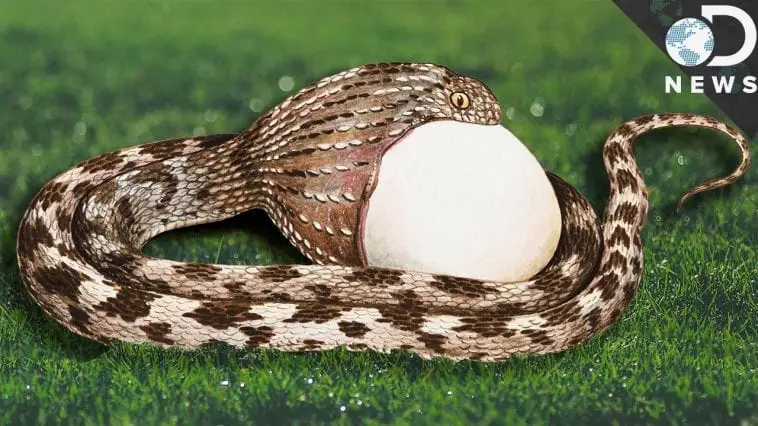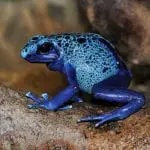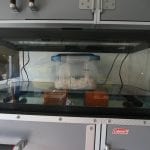Introduction
Most snakes are carnivores. Some are fed on prey, which is warm-blooded, while the other species eat amphibians, insects, eggs, fish, reptiles, and more. Usually, they swallow the whole food. Pet snakes eat hamsters, gerbils, rats, and mice. The bigger snakes are fed on the whole rabbit.
The advantage of eating the whole prey is that their owner feeds them having the nutritional complete diet that prevents the snake from developing diseases related to diet. A balanced diet includes eating whole mice and rats. In captivity, live food should not be given. This is to avoid giving threats and injury to the snake. A bite from a small mouse can cause infection to the snake. Therefore, training a snake to eat dead prey in captivity should be done. It is safer for the snake. Snakes can be given thawed frozen prey or freshly killed prey. You can buy them from pet stores.
Feeding Your Snakes
Feeding your snake will depend on the activity, size, and age of your snake. Usually, the young or small once should eat two times a week, and the bigger ones would be once or twice every week. The breeding snakes should eat more. Asking your vet in case you are not sure about what to give is an ideal thing to do. A snake not eating the food yet means he is not hungry yet.
In terms of water needs, giving a daily amount of fresh and clean water is great. You can put them in a big ceramic bowl or crock. Water is essential for humidity and hydration, especially when your snake goes on shedding. Snakes love soaking themselves in the water dish. Don’t forget to replace the water and clean the containers every day.
Sometimes is it inevitable that snakes don’t eat? If this happens, there are surely reasons behind it like stress, hibernation, pregnancy, shedding, noise, temperature, and more. These reasons should be addressed as early as possible to avoid the occurrence of a worse disease. Being a keen observer is one key to dealing with health problems. If you wonder if you should give your snake a vitamin, the answer is no. Therefore, you should make sure that your snake is fed well.
Snakes Anatomy and Eating
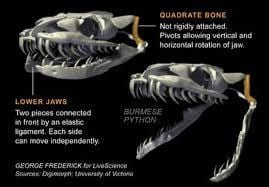
As mentioned, snakes are limbless creatures that could face problems in getting food; however, they have come up with ways to survive despite not having limbs and teeth as well. Some snakes grab the food, then constrict it. Others inject their deadly venom. The next question is how to eat. Not having limbs means not tearing the food easily, so then they have no choice left but to swallow it whole. To cope, their bodies are equipped with advancements. Let us figure it out.
The process starts by locating the prey’s head. All snakes do this. For the reason that swallowing is easier. Going for the tail first is a very rare case. Once the snake locates the head, it begins with the swallowing. Its jaw is opened widely; then, it takes the prey into its mouth. The jaw expands until the snake can accommodate the whole prey. The mandibles move one at a time. The throat muscle assists the jaw, and the glands soften the food.
Reptiles like snakes have skulls that are aired out and poked having holes. These holes make it possible for the snake to expand jaws. The snake’s jugal and upper temporal are missing. The mandibles are not connected to making them move freely. This is the reason why their jaws are expanded to accommodate big prey. The quadrate bone is larger, making way for a swinging room in the mouth. This is for flexibility.
Unusual Eating Methods
As we know, snakes don’t have teeth to cut and chew their food. They don’t bother with chewing. In addition, they lack paws for holding food. To deal with it, swallowing the whole food makes sense. They open their mouth wide, then swallow the prey whole, and digest it at its leisure. However, not all snakes do the same thing. There are other snakes that rip their food into pieces. This is indeed impressive for someone who doesn’t have any limbs.
A. Cat-eyed Water Snake
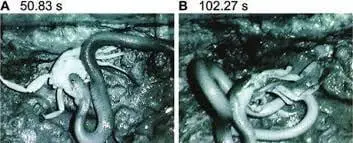
The small size cat-eyed water snake or the scientific term, Gerarda prevostiana, resides in the mangroves. In this place, their food is not always squishy and soft. It was found out that it is a picky eater as it is fed on crabs having hard and spiky shells. This snake has discovered a small window after the crab’s molting. This time the crab’s shell is softer. This time the snake attacks the crab. However, the snake just has 20 minutes’ chance to eat the crab. Since the molting gets softer this time, it is easy for the snake to rip it into chunks without its hands. How does the snake do it? It starts by grasping the crab into its mouth, then it makes a loop, pulls the crab, loops again, and crushes it. The result? The food is softer and easier for the snake to pull the chunk off, followed by tearing off the crab’s leg then eating them individually. Accordingly, the crab is really huge, but this snake manages to eat it with its wise eating method.
B. Blindsnake
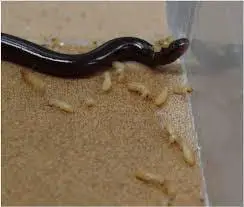
Another snake with a unique eating style is the blindsnake or the Indotyphlops braminus. This snake breaks the head off the termite before it swallows the rest of the body. It starts by swallowing the termite’s body as the head stays outside the snake’s mouth. The termite’s head is rubbed on a surface until the head is removed from the body.
Once the head is removed, the body is swallowed. It takes 3 seconds. The head is not eaten. These snakes are found out to decapitate their meals half the time. It is unusual and unexpected. The reason for not eating the head is it contains compounds of unpleasant toxins, or the snake wants to save space in its gut. This snake stands out among the other 3,000 snake species.
Senses Snakes Use to Catch Prey
Snakes possess tools in order to capture and hunt prey despite the lack of limbs. They have senses which are finely honed. These senses allow them to survive in the desert and rainforest.
Good Vibrations
Unlike us, humans cannot hear; in contrast, can pick up and interpret the vibrations like how humans pick up and interpret the sound waves. They don’t have an outer ear but have an inner ear to do the work. The movement coming from the prey causes vibrations transmitted via the snake’s jawbone. The vibrations let them hear movement and identify the location of the prey.
Heat Vision
It is like having a superpower sense. Some snakes can detect the prey’s thermal signatures. Snakes possess pits on their heads, which are sensitive to the heat changes in the environment. Although it is dark, the pit lets them home on the body heat of an animal. Pythons and boas have lots of pits under their lip scales.
Chemical Information
Potential prey gives food chemical signals which are interpreted by the snake. Snakes use their sense of smell to pick the chemical information up using their tongues. The snake brings out its tongue to detect the scent’s trail. This is the first step done to locate the prey.
Vision and Movement Detection
Snakes dwell on the ground. Thus, they don’t need a vision that is finely honed. Snakes have sharp eyes as well as horizontal pupils that are extended. Their eyes cannot be compared to human vision, but they have an unbelievable ability to detect prey’s movement.
Reasons
As previously mentioned, snakes don’t possess limbs to hold their food. The last resort is to swallow the food whole. Nonetheless, not all snakes have the same behavior. Some tear their food apart to make eating easier for them. Some snake species have found ways to deal with it. Like the cat-eyed water snake, it loops and pulls out the crab before eating. In addition, the blindsnake cuts the termite’s head off then eats the body after. The main point then for doing such behavior is to make eating easier or avoid any toxins that could harm them.
Conclusion
Every animal on this earth has to eat in order to survive. It is not unknown that each creature has its own way to find its food. Of course, it has to go through methods in order to catch its prey. Catching prey takes time and a wise way. Once it finds its prey, it has to carefully and wisely attack and catch. Snake, as a predator, is equipped with excellent senses for prey catching. Although they share some common ways, they vary in some methods employ. They may not have limbs or teeth to aid them in chewing, yet they are strategic and efficient to feed themselves. It only shows how nature helps them cope. In the animal world, each animal has to be strategic not to die, and that is what snakes do. Amazingly unbelievable creatures.

